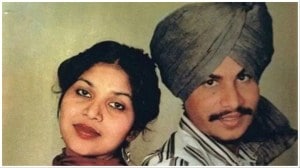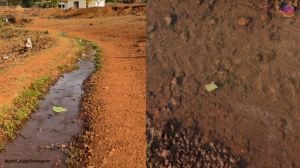- India
- International
In Kohima Village, an octogenarian is preserving a treasure trove from World War II
The war is long over. The memories are long gone. But in an annexe built in an octogenarian’s home in Nagaland's Kohima Village lies The Little Museum of The Great War — filled with relics from one of the fiercest battles of World War II.
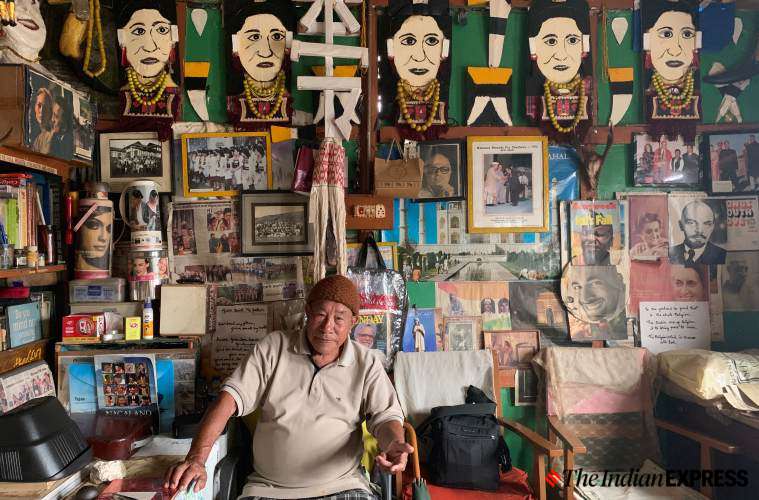 BK Sachu, 85, has converted a part of his home in Kohima Village to a museum which houses relics from World War II. (Express photo by Tora Agarwala)
BK Sachu, 85, has converted a part of his home in Kohima Village to a museum which houses relics from World War II. (Express photo by Tora Agarwala)
Not many people come to visit BK Sachu, a retired school teacher who lives in Kohima Village. But to those who do, the 85-year-old always asks, “Why would people come to meet an old man like me?”
It may as well be a rhetorical question because there is no one reason to visit Sachu; there are many.
For starters, he is one of the few people who has a working knowledge of the Japanese language in the area. Second, he has lived through one of the fiercest battles of World War II. And third, he has an entire museum to showcase those times and the people from it.
In March 1944, when Sachu was 10, the Japanese army had filtered into the villages of Kohima and Imphal. Sachu remembers them as “nice men” who “taught him the Japanese National Anthem”. A month later, as Sachu and his family had to evacuate their homes and hide in the forests, one of World War II’s bloodiest battles followed. The Japanese suffered a crushing defeat, which marked the end of their imperial pursuit in Asia, in the hands of the Allied powers.
When they returned home, after the 80-day-long siege ended, everything was in ruins. “This was once a real battlefield,” says Sachu, gesturing around him. In the trek up to his house, around Kohima Village, located in Nagaland’s Kohima district, the remnants of the war are completely missable. It is only if one pays attention that they will see that the rusting tins sheets, which serve as boundaries for steps, are covered with holes from gunshots; and a lone stone monument erected in the memory of soldiers who fought and died bravely.

“When we came back only dead bodies and broken bits of shells, guns and bones lay around,” says Sachu.
The war is long over. The memories are long gone. But in an annexe built in Sachu’s house, accessible by a set of wooden stairs, proof — in the form of relics and artefacts, arms and ammunitions — remains. Sachu calls it The Little Museum of The Great War.
A WAR-TIME EXCHANGE
It was only in 2013 when the National Army Museum of Britain termed them ‘Britain’s Greatest Battle’ that the twin battles of Kohima and Imphal of World War II entered public consciousness.
“People talk about things they see and read in books, but neither of these battles have been included in school curricula. That is one reason not many people know about them,” says Yumnam Rajeshwor Singh, who is the President of the Second World War Imphal Campaign Foundation, “But it was definitely the most significant of battles fought in the Burma Campaign.”
In 1942, when Burma was captured by the Japanese from the British, a mass exodus of Indians and British followed from the region. The Japanese then decided to take Kohima and Imphal, with the help of Netaji Subhash Chandra Bose’s Indian National Army (INA). “In 1943, the Japanese were losing every where — in Pacific, in Solomon islands, you name it. They were answerable to the people and a conquest then was a matter of pride. They thought they would be able to win Imphal and Kohima,” says the Imphal-based Yumnam.
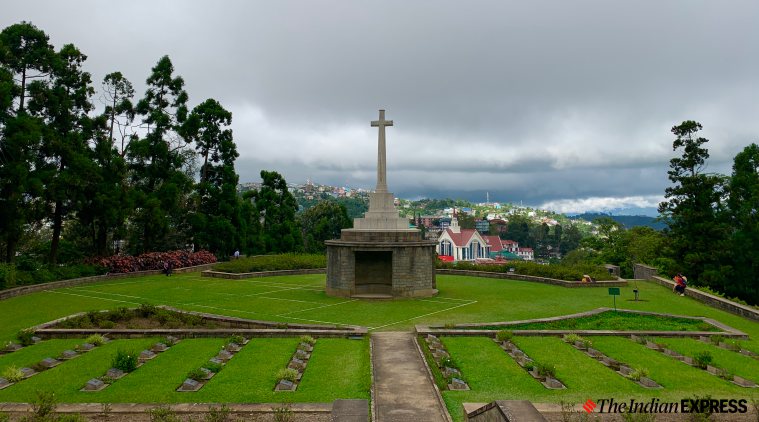 The World War II Cemetery at Kohima, Nagaland commemorates one of the fiercest battles of the War. (Express photo by Tora Agarwala)
The World War II Cemetery at Kohima, Nagaland commemorates one of the fiercest battles of the War. (Express photo by Tora Agarwala)
However, the Japanese faced one of its most embarrassing defeats that cost them its best military men — with over 50,000 casualties. “It was not just bad planning. The terrain was rugged, surrounded by impenetrable mountains, and rife with diseases like malaria, dysentery and typhoid. The Japanese were ill-equipped to handle that — many died from illness. The British, on the other hand, had air support too,” says Yumnam, who is also a member of the Burma Campaign Society of London formed to promote understanding of Britain and Japan’s encounter during World War II.
While two immaculately-preserved war cemeteries in both Imphal and Kohima as well as a few well-established museums (INA Museum and Imphal Peace Museum in Manipur and World War II Museum in Kisama, Nagaland) commemorate these battles, this episode, which has enjoyed considerable press in the past few years, is usually described as “forgotten”. For people like Sachu though, the memories remain fresh, even 75 years later.
“The month before the war when the Japanese forces were here, the villagers were scared but then we realised they were not trying to harm us in any way.” says Sachu. A kind of cultural exchange ensued where youngsters like Sachu would learn Japanese, and the army men, in turn, who had depleted resources, would learn about Naga herbs — for both medicine and food — from the locals.
 The museum is filled with broken shells, parts of old rifles and other such relics. (Express photo by Tora Agarwala)
The museum is filled with broken shells, parts of old rifles and other such relics. (Express photo by Tora Agarwala)
Sachu’s homegrown museum — built thirty five years ago and filled with handwritten notes in Japanese — is testimony to this exchange.
“After the war, my father and I started collecting things. Many told us ‘Don’t touch this and don’t touch’ but something told me that these would be important later,”says Sachu. In 1985, he started arranging the items — broken shells, parts of rifles, and other relics — in a room in his house. Over the years, the collection has grown (as Sachu added his personal items such as photographs, old newspaper clippings and sculptures) but even diminished (as many officers came to purchase these treasures).
At the outset, the villagers would give the British army officers rifles and shells, in exchange for food. “One rifle would get us three kilos of salt,” recalls Sachu.
However, over the years, Sachu has refused to sell many of his belongings. While potentially dangerous ones like old grenades have been confiscated (there have been a series of mishaps over the years where live grenades from the war have inadvertently resulted in deaths of villagers), the octogenarian has conserved old gifts like a typewriter an American military man gave him in 1944. The beat-up old box now sits in the corner of the museum. Around it are shells, broken parts of old rifles, fraying magazines and newspaper clippings, paintings and busts of faces.
The latter includes Sachu’s own creations from memory. These are subjects who might not find space in the mainstream narrative of a war: faces of soldiers he has had conversations with, a young neighbour who died in the bombing, and even the “comfort army”, an euphemism for prostitutes or young women who the Japanese brought from Korea.
A MUSEUM FOR THE FUTURE
At 85, Sachu still sweeps, dust and cleans the museum every other day. While the the space has grown to include items of his personal use (unrelated to World War II), the collection still draws visits from the odd guest from different parts of the world.
“Not many people, even in Kohima, know about this museum,” says Sophy Lasuh, a filmmaker based in the Nagaland capital, “But those who do, make it a point to visit because what he has done here is amazing.”
Testimony is a guest’s diary filled with comments from visitors over the years. Some are even from Japan.
“The tendency to describe this war as ‘forgotten’ comes from a very Western perspective. First of all, the Burma Campaign happened in the least well-known part of Asia. It happened in the jungles in an obscure part of the world. This applied to India’s remembrance of the battles too until very recently. However, for the Japanese this battle was memorable because of how scarring it was. It is said that a generation of Japanese all know the word ‘Imphal’,”says Hemant Singh Katoch, author of the book, The Battlefields of Imphal.
2019 marks the 75th anniversary of the Battles of Imphal and Kohima and while the government has announced year-long celebrations to mark the two battles, Sachu says he did not know much about that. “I suppose the celebrations are at ministerial level, so they are not inviting villagers.”
But there are villagers — in both Kohima and Nagaland — whose are replete with accounts of the time. “Yes the Battle in Kohima is famous for the skirmish in the Tennis court, but the villagers across the region have many stories to tell,” says National Award-winning filmmaker Utpal Borpujari, who made a documentary, produced by Subimal Bhattacharjee, Memories of a Forgotten War in 2013. “In my research, I also noticed many people from Imphal and Kohima have a tendency to archive too.”
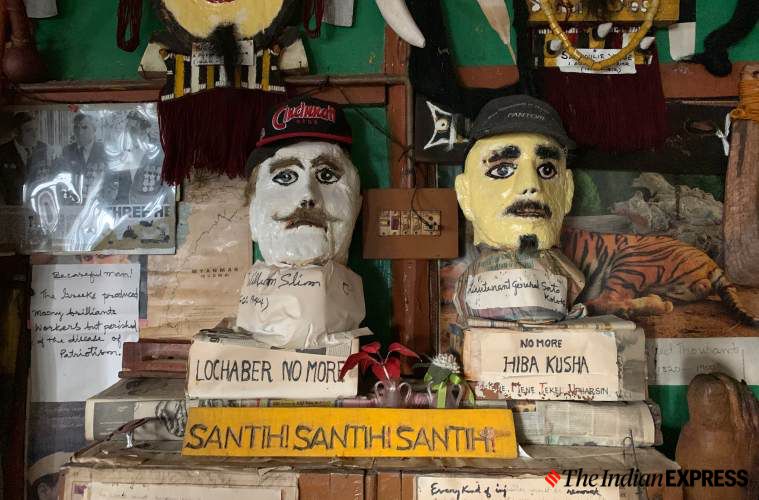 Sachu has also made busts and paintings of soldiers and other people he remembers from the war. (Express photo by Tora Agarwala)
Sachu has also made busts and paintings of soldiers and other people he remembers from the war. (Express photo by Tora Agarwala)
Smaller private collections like that of Sachu’s can be found in Imphal too. “Lot of people have started coming up with personal collections of their own. I have seen three-four museums. Even if they are not exclusively dedicated to the World War, they include relics,” says Yumnam, citing examples in Palel and Kaching in Manipur. In Ukhrul district, another man named Yangmaso Shishak, has built a small museum and war memorial to commemorate the Japanese.
Among the many pictures in Sachu’s musuem, there is also a photograph from 1994 where he is receiving the National Award from former President Shankar Dayal Sharma at the Rashtrapati Bhawan for his services as a teacher. Sachu taught at the local Kohima Baptist School for 50 years. “That is what I like doing the best. Imparting knowledge and education,” he says, “It is also the reason I built this museum.”
With inputs from Sophy Lasuh
Apr 26: Latest News
- 01
- 02
- 03
- 04
- 05




















